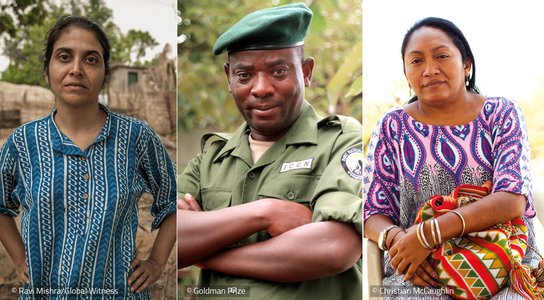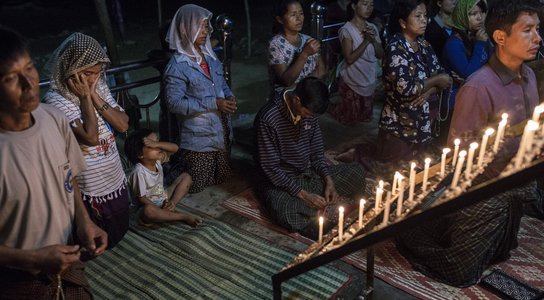Civic space – conditions that allow civil society and individuals to organise, participate and communicate freely and influence the political and social structures around them – is being eroded in countries around the world. Much ink has been spilled on the idea of this being a global trend. But agreement on its main characteristics, what it means, and what to do about it, is more elusive. Based on recent discussions with a range of experts, as well as some of those on the front line, here’s a snapshot of some of the main strands to the debate right now.
What is erosion of civic space?
There’s no doubt that much of this discussion about an erosion of civic space is driven or at least amplified by northern organisations and commentators. I was recently shown results of a survey suggesting that northern CSOs are much more worried about the issue than their southern counterparts. Are they over-reacting to a problem they never expected to encounter at home? Maybe. But there is plenty of evidence that the threats are real enough:
- Legal restrictions – according to the International Center for Not-for-Profit Law (ICNL), from 2004 to 2010 over 50 countries considered or enacted measures restricting civil society. From 2012-2015, moreover, “more than 120 laws constraining the freedoms of association or assembly have been proposed or enacted in 60 countries”. Despotic regimes around the world are imposing regulatory measures to restrict civic space. But they are actually out-numbered by governments of ‘partially free’ countries that are doing the same thing. In other words, elected strongmen in the mould of Rodrigo Duterte and Viktor Orban are amongst the most avid assailants of civic freedoms.
- Digital surveillance and censorship – this is increasingly prevalent, with some governments riding on the ‘fake news’ narrative expounded by President Trump as a means of justifying their actions. The crackdown on media and CSOs launched by Cambodian Prime Minister Hun Sen ahead of the election he rigged last year is just one illustrative example.
- Physical attacks – Global Witness’ own work on attacks on land and environmental defenders – those on the front line in the fight against seizure of communities’ land, forests and other natural resources – provides a grim illustration. In 2017, 201 defenders were murdered, with the greatest number of killings occurring in Brazil, where the policies of new president Jair Bolsonaro are now intensifying the already severe perils they face.
- Demonisation of civil society groups – public criticism of CSOs by governments is hardly new but intense concerted attacks on CSOs’ legitimacy appear to be on the rise. Recent research identifies a pattern of governments accusing CSOs of being self-appointed, unrepresentative, covertly political and under the control of foreign forces.
Mapping the manifestations is complex, but straightforward compared to digging out the root causes. Are these outgrowths of an abusive global economic system that requires repression in order to function? If so, how does this insight empower and equip people to respond?
What is the response?
If the international trend is discernible, the solutions are much less so. A phenomenon that has a degree of shape to it when viewed through the lens of global statistics takes very distinct forms in each country concerned. Governments use similar tactics, but not necessarily a predictable sequence or set formula. We may be talking less about a playbook than a menu of oppressive measures from which multiple items may be ordered simultaneously.
In framing a response, there are many questions for campaigners to consider. These are just a taster:
If this is a global struggle, where to engage? Should one focus on those countries where the abuses are most severe and emblematic or those where the battles might be more winnable? How to change norms and standards internationally that might bring remedy at a regional or even global level when there are so few obvious levers to pull on? What is the right combination of local and global-level campaigning?
Is there a relationship between erosion of civic space in more democratic countries, where the decline may be more significant in relative than absolute terms, and conditions in countries where restrictions are less novel and far more pervasive? When politicians in countries previously assumed to be standard-bearers for human rights erode civic space, does this embolden autocrats in other parts of the world? If so, does one need a strategy that addresses both types of scenarios?
How do we even talk about this? As one representative of an organisation dedicated to civic freedoms commented: “I wouldn’t know how to explain this to people in the villages I work in”. Civic space is a wonkish term that has little resonance even with those that most obviously benefit from it. Advocating for it can appear more self-serving than public-spirited.
Moreover, as another expert notes, with reference to Europe, debates about civic space play to the strengths of illiberal populists, who can cut through the abstractions with arguments about security and identity that may be fear mongering and misleading but have tangibility and immediacy. Strategies for countering attacks on civic space need to speak to the issues that people care about in ways that inspire them to act. But these issues are different in every context. Is it possible to adapt the tactics each time, while maintaining an overall strategy and, crucially, a narrative that is universal and compelling?
Unsurprisingly, framing the questions is easier than formulating the answers, but those working on this issue have plenty of ideas grounded in a wide range of experiences. I’ve noted here just a handful that seemed particularly relevant to Global Witness’ own work and that of our partners:
- Show solidarity – there may not always be safety in numbers but there is nothing like isolation to increase vulnerability. Public support and private interventions can be very effective means of countering governments’ attempts to shut down civic space and harass individual activists. For me, this brings to mind the effective international action my colleagues were part of last year in response to the detention of anti-corruption campaigner Ali Idrissa in Niger.
- Look for ways of adapting to and navigating oppressive laws and regulations by taking a minimal compliance approach. Many un-democratic regimes are also very inflexible. Bureaucrats’ fear of being seen to bend their own rules may create opportunities for survival within legal frameworks designed to suppress.
- Although the ability of intergovernmental bodies to restrain governments is on the slide, continue to make use of UN mechanisms and international financial institutions where these offer useful points of leverage. The investigating and reporting by UN rapporteurs is one. The setting and application of standards by international development banks is another.
- Where states, individually and collectively,
lack the will or the means to address the threat to civic space, push non-state
actors, such as the private sector, to step up. This is something we are
already thinking about as we expand our work on land and environmental
defenders, many of whom are targeted for their opposition to agribusiness and
extractive industries ventures that are underpinned by international investment
and international supply chains.
This hardly constitutes a full menu of approaches to counter those of oppressive governments but does offer some useful ingredients to work with. As we at Global Witness get into gear over the next few months with the development of a new strategy, we’ll be giving more thought to what erosion of civic space means for us, as an organisation, and what we can do to contribute to efforts to turn the tide.
Photo credit: Observatory of Mining Conflict of Peru
You might also like
-
Report Defenders of the earth
2016 saw a record 200 killings of people defending their land, forests and rivers against destructive industries
-
Blog post Global Witness stands with hundreds of US news organizations in support for press freedom
Global Witness stands in solidarity with the 350 plus publications denouncing Trump's attacks on the press.
-
Press release Myanmar must end crackdown on Kachin civil society, warns Global Witness
The Myanmar authorities must end its assault on peaceful protestors and immediately release three Kachin peace activists jailed for defaming the military last week and drop charges against another three charged with peacefully protesting the court conviction.